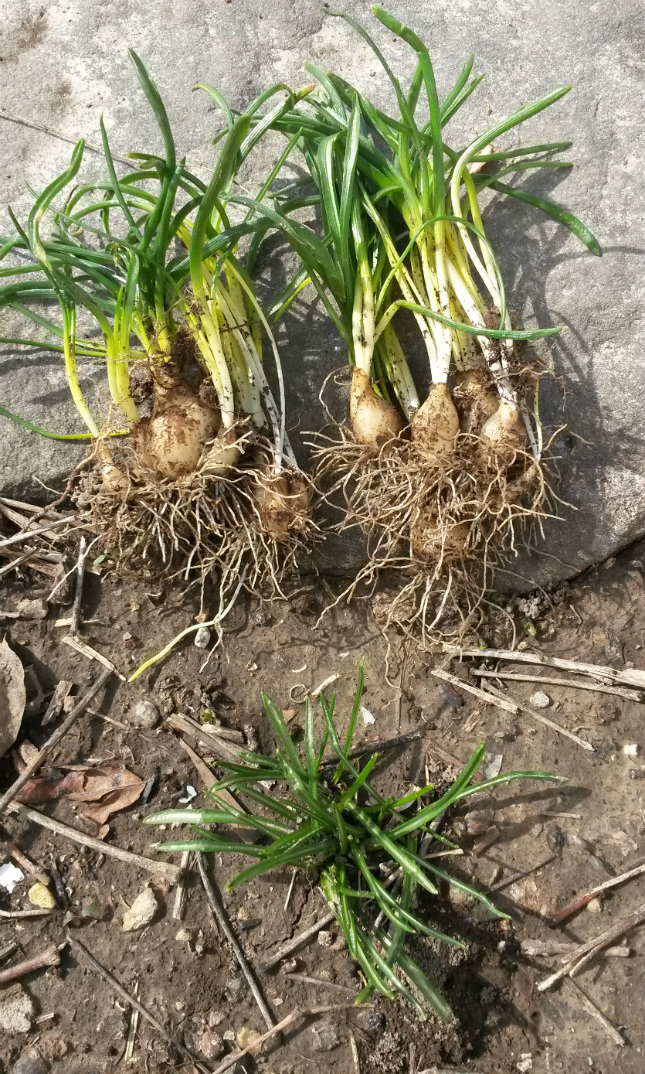By Besa Schweitzer
Member, Wild Ones – St. Louis Chapter
My least favorite plant this month:
The Star of Bethlehem wins March’s least favorite plant of the month award. I first saw the Star of Bethlehem (Ornithogalum umbellatum) at the Russell E. Emmenegger Nature Park on a trip to look for spring flowers. When I looked it up in my wildflower book I was surprised to see that it wasn’t a native flower. Soon I recognized Star of Bethlehem in a garden I was caring for and decided to be a benevolent gardener and let it be to see how it grew.
This flower is one of the first green shoots out of the ground in late February and is a very welcome sight. Soon after that it has a simple white flower. The leaves wither away in the summer heat and then there is no sign of the plant until next spring.
Well, it spreads quickly! The patch of flowers was doubled in size the next year with a few small patches in other parts of the yard. Star of Bethlehem grows from a bulb that creates bulblets and can form dense colonies. The bulbs are very hardy and if you dig them up and put them in the compost, you will grow the evil plant everywhere you spread your compost.
The most effective way to remove Star of Bethlehem is to dig out each little bulb in March as soon as they emerge. They must be dug out carefully to not break off the leaves or leave any bulblets in the ground. When taking the dirt off the plants do not put the dirt back into an unaffected area because a small missed bulb will start a new population.
Ineffective methods of removing the Star of Bethlehem that I have tried include; composting, repeated pulling or mowing of the leaves, burying it a foot deep, outcompeting with aggressive plants, and solarizing. Digging out each bulb and removing it from the garden is the only way I know to kill it and pieces will be missed so infected areas will need to be cleared for several years.
Learn to recognize this spring ephemeral and take early action when spotted. It is so much easier to remove it now than when it is completely tangled up with roots of other garden plants. March is a great time to get out and look for many invasive species and take early action.
[Editor’s Note: Besa’s passion for native plants is much appreciated. Her subjective word choice of “evil” does not necessarily represent the views of Wild Ones.]



I, too, have dealt with this in my yard. Since making an effort to clear the bulk of it away 4 years ago, I have had to remove missed ones each year. I still found 6 sprigs this spring. One of these days I will have it all gone (hopefully).
Should it not be put in a municipal yard waste bin, do you think? I’m not sure how the material they collect is composted, and I’d hate to think I’m spreading those nasty bulblets elsewhere.
I don’t because I don’t trust it to be totally composted. If you don’t want to put it in the trash you could let it dry and burn it or put it in a bucket with water and let it rot.
Everything Besa writes here is true. I have been erratically digging up Star of Bethleham for perhaps ten years and due to my inconsistency it is still thriving in my yard.
I have an infestation of star of Bethlehem growing in gravel. I am at a loss to know how to get rid of it.
That sounds tough. You might need to use chemicals. I would check with a turf grass pro, they are good at killing things.